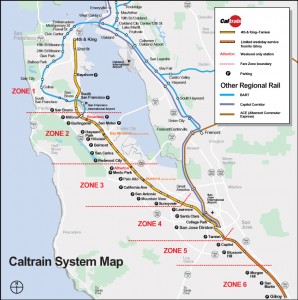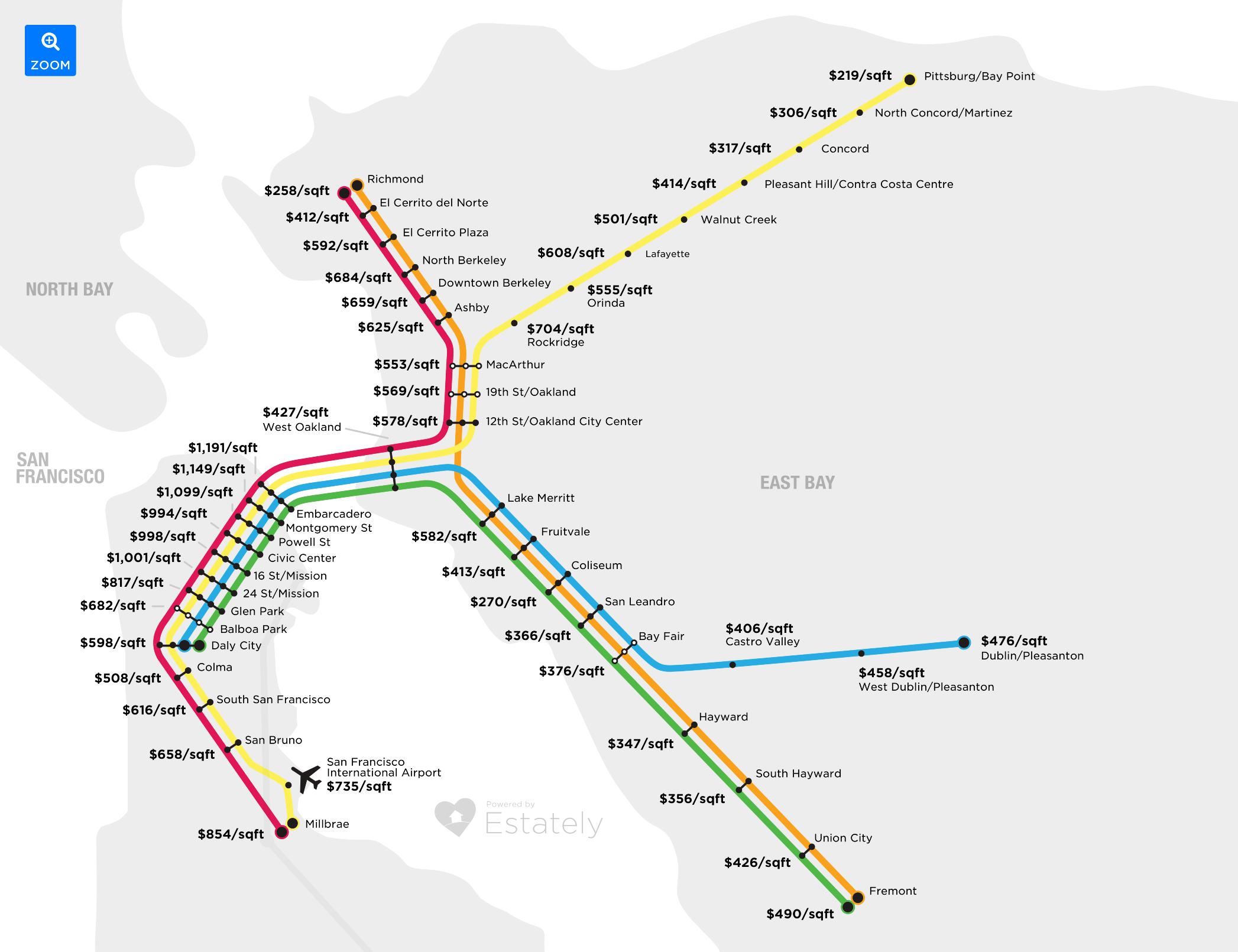 In recent years, we’ve had public transit, and we’ve had private employer-based transit. Maybe now we’re about to see the ultimate hybrid: private companies sponsoring public transit improvements.
In recent years, we’ve had public transit, and we’ve had private employer-based transit. Maybe now we’re about to see the ultimate hybrid: private companies sponsoring public transit improvements.
The San Francisco Chronicle reports that major Silicon Valley corporations, frustrated with poor Caltrain commuter rail service [map to the left] and facing opposition to their so-called Google luxury buses, are forming the “Caltrain Commuter Coalition.” The group includes the 49ers, Oracle, LinkedIn, Stanford University, HP and other firms yet to be named:
The group will work with Caltrain — a partnership of San Francisco, San Mateo and Santa Clara county transportation agencies — to press for funding to expand the commuter railroad’s capacity, replace its trains pulled by diesel locomotives with electric trains, extend the tracks to the Transbay Terminal and make other improvements.
“This is the result of conversations we’ve have had for years with these companies,” Seamus Murphy, Caltrain’s director of government and community affairs, said Sunday. “They realize that they can’t continue to rely on shuttles or expand shuttles, and they’ve been frustrated, frankly, that they can’t rely on Caltrain or public transportation.”
If done right, this could be a very positive development. First, cash-strapped transit agencies like Caltrain could use the private dollars to bolster existing transit service to benefit everyone. Second, private companies would no longer have to pay for curb-hogging shuttles that inspire hatred from many locals. And finally, it’s a sign that public transit like Caltrain is providing a societal good — in terms of usefulness, ridership, and general potential — if private employers are willing to invest in it.
I should also note that this development could save the High Speed Rail Authority some money. The agency has proposed using rail funds to electrify Caltrain and extend it to the future Transbay Terminal. I assume with this privately funded effort, that need would no longer be there.



